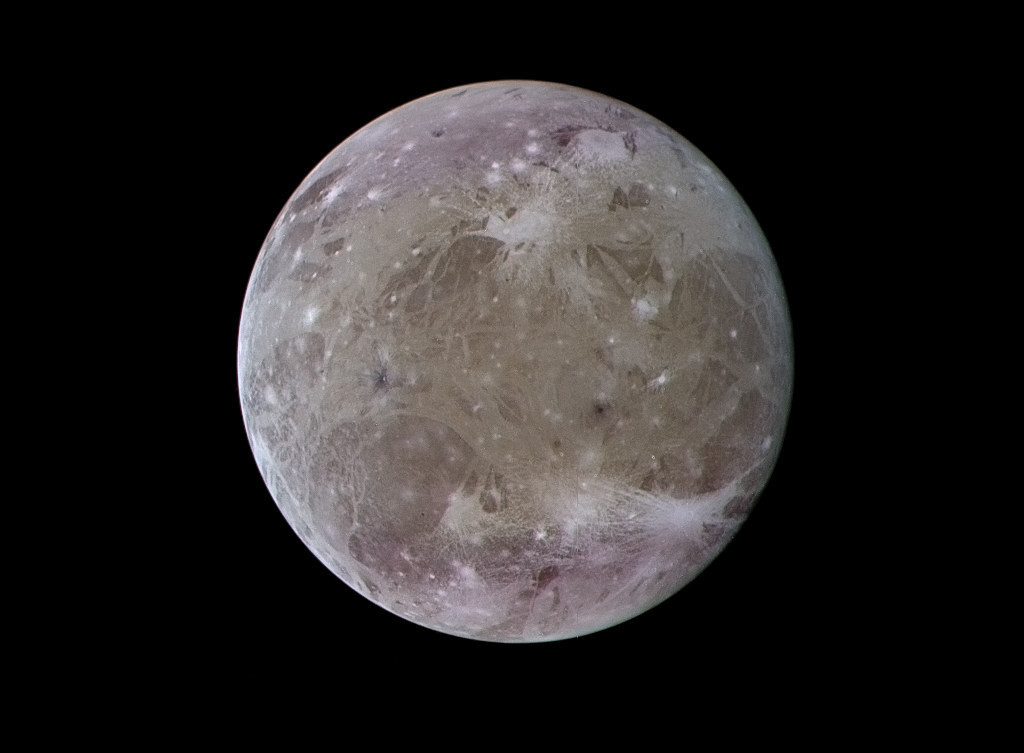
Recent data gathered by NASA’s Juno spacecraft has revealed the presence of mineral salts and organic compounds on Jupiter’s colossal moon, Ganymede.
A report published in the journal Nature Astronomy just yesterday unveils these discoveries, potentially offering valuable insights to scientists studying the moon’s origins and the contents of its hidden ocean.
The infrared image data was collected on June 7, 2021, when NASA’s Juno spacecraft flew over Ganymede, cruising at an altitude of 650 miles (1,046 kilometers).
“We found the greatest abundance of salts and organics in the dark and bright terrains at latitudes protected by the magnetic field,” said Scott Bolton, who serves as the principal investigator for Juno from the Southwest Research Institute in San Antonio. “This suggests we are seeing the remnants of a deep ocean brine that reached the surface of this frozen world,” said Bolton.
Juno has been circling the massive planet since 2016. Currently, it’s in a phase of its mission during which it occasionally approaches some of Jupiter’s large moons. Just this October, Juno made a remarkably close pass by Jupiter’s volcanic moon, Io, as reported by Forbes.
Ganymede is the ninth-largest object in the solar system
Ganymede, which holds the title of Jupiter’s largest of its seventy-nine moons, stands out as an exceptional subject for solar system exploration.
Measuring a diameter of 3,273 miles (or 5,268 kilometers), Ganymede not only takes the crown as the largest moon but also claims the ninth spot as the most massive entity in our solar system. It surpasses the size of Mercury and even the dwarf planet Pluto.
NASA's Juno mission has for the first time detected mineral salts and organic compounds on the surface of Jupiter's moon Ganymede, NASA said on Tuesday, suggesting an underground ocean brine is reaching the crust of the icy world. pic.twitter.com/iguqenq9dp
— China Science (@ChinaScience) October 31, 2023
Ganymede possesses some extraordinary features. It has an atmosphere, internal dynamo, and hidden ocean that flows beneath layers of ice.
In fact, this ocean might contain more water than all the oceans on Earth, and it lies approximately a hundred miles (or 160 kilometers) below the icy shell. NASA’s Galileo spacecraft initially discovered this ocean in the 1990s, according to Forbes.
JUICE to orbit Ganymede for nine months beginning late 2034
The European Space Agency’s Jupiter Icy Moons Explorer (JUICE) spacecraft with a budget of $1.7 billion was launched in April. Its ultimate mission is to enter orbit around Ganymede for a duration of nine months beginning in late 2034. If this mission is successful, it will mark a historic achievement as the first spacecraft to orbit a moon beyond Earth’s own.
Before reaching Ganymede, JUICE is set to perform two flybys of Europa followed by twenty-one flybys of Callisto and twelve flybys of Ganymede. It will also complete sixty-seven orbits around Jupiter.
This mission aims to provide vital insights into Ganymede by studying it up close. Planetary scientists expect that this close examination will enhance their understanding of other distant moons and dwarf planets in our solar system and even beyond, as reported by Forbes.
See all the latest news from Greece and the world at Greekreporter.com. Contact our newsroom to report an update or send your story, photos and videos. Follow GR on Google News and subscribe here to our daily email!



